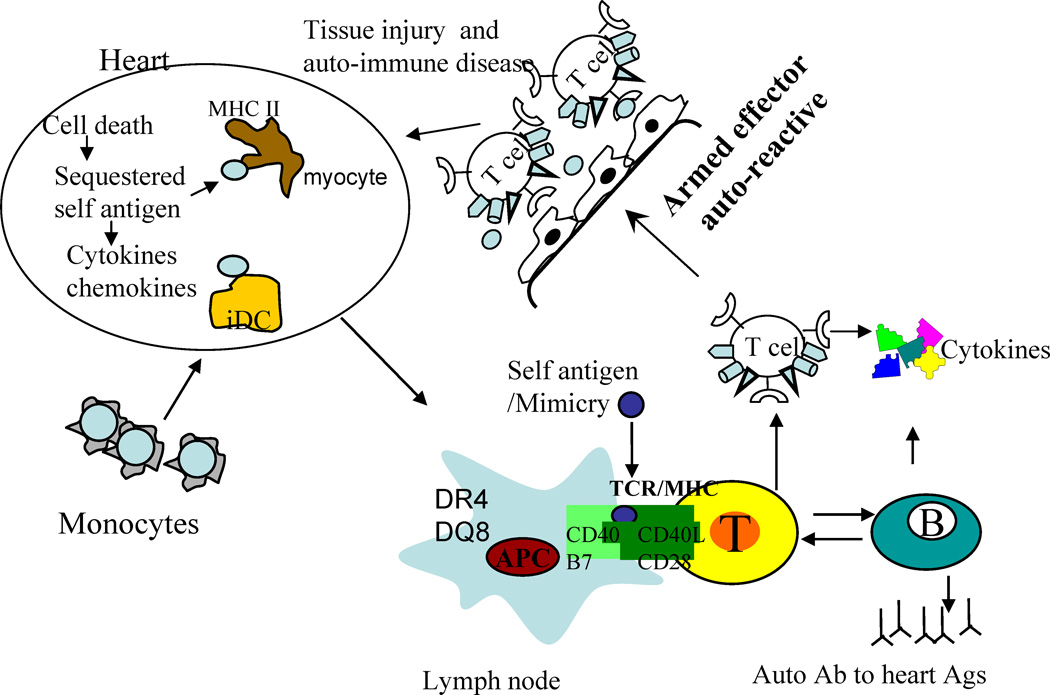Figure 6.
Schematic diagram of pathogenesis of myocarditis/dilated cardiomyopathy. Any damage to heart by viral infection can lead to cell death and availability of self antigen. Myocytes express class II molecules and in the event of inflammation, can present self antigen to infiltrating T cells. Alternatively, T cells and DCs in the periphery amplify the autoreactive response via antigen presentation, self or microbial epitopes that mimic heart antigen, and production of autoantibodies. These effector T cells can home to heart and lead to damage. Monocytes can carry antigens to heart and can activate DCs locally resulting in production of chemokines and inflammatory cytokines leading to infiltration of heart with T cells and mature DCs followed by destruction of myocytes and cardiomyopathy.

